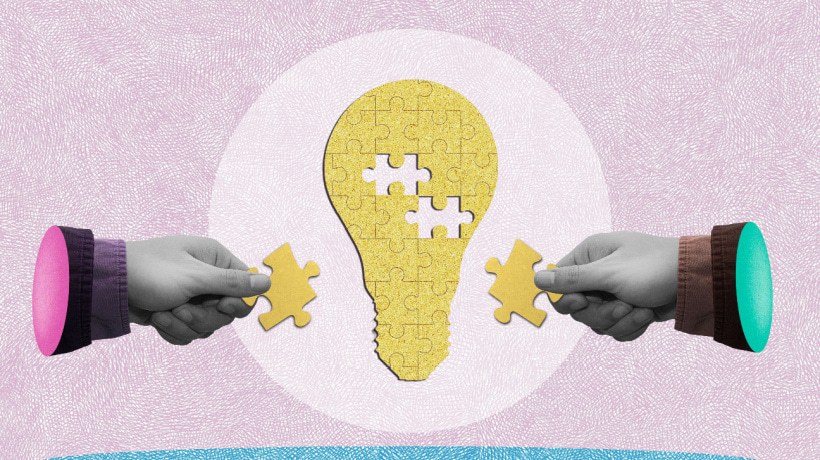Microlearning Vs. Nanolearning
Small is powerful. Innovation has helped to deliver effective results with more efficient means, such as smaller surgical cuts, shorter yet powerful modes of communication, and more. The computers, once as big as a room, now come with 10–13-inch screens. The facilitation of learning has not remained untouched by the winds of change. How has corporate training metamorphosized amid the tight work schedule in this digital era? This article will examine microlearning, nanolearning, and their respective roles in corporate training.
The world of information has expanded, but the modes of delivering impactful messages have shrunk. YouTube Shorts, Twitter, and an app that summarizes the best news in 60 words are a few examples to reckon with. The ecosystem of learning at work has evolved, too.
Corporate training encompasses both face-to-face IELT and eLearning. In this highly competitive world of commerce, learning trends have changed to incorporate bite-sized courses to facilitate learning in the flow of work (LIFOW). What courses are those?
Microlearning And Nanolearning
Microlearning and Nanolearning are both smaller nuggets of learning modules that can be used to upskill employees. What are they, and how are they different? Let’s dive deeper.
What Is Microlearning?
Microlearning is a self-contained course which focuses on a specific learning objective, having its own knowledge checks and summary. It is a standalone piece of content. Some of the approaches used to engage the learners are rich multimedia and game-based strategy.
Microlearning is not about chunking large pieces of content into smaller pieces. Anchored to its learning objective, it is a complete and holistic learning experience.
- It is objective-driven.
- It focuses only on tasks and not history.
- It can be implemented before, during, and after formal training.
"Personally, I am always ready to learn; although I don't always like being taught" – Winston Churchill
The message of this quote finds reflection in microlearning. The learner does not feel the overbearance of the instructor. A good Instructional Design strategy guides the learner through the course.
- The learner can go through the training modules at their own pace, per their work schedule.
- They learn by doing it themselves. Interactivity and scenarios keep them engaged.
- A social environment to collaborate in is provided. Learners can learn and discuss with peers.
- Laughter and engagement through gamification make retention deeper.
- Remediation lets one revise till one becomes a pro.
Microlearning is effective in the following ways:
- It increases the retention of knowledge.
- It facilitates just-in-time learning.
- It ensures reinforcement of knowledge.
- It provides additional information and tips to complete a task successfully.
Let's now understand nanolearning.
Nanolearning
Nanolearning is also a bite-sized training course but shorter and crisper than microlearning. It is ideal for refresher training.
Microlearning And Nanolearning Share Similarities
Both have similarities. For example, they:
- Play a role in making the teams future-ready.
- Can be punctuated into LIFOW.
- Facilitate reinforcement of learning.
- Help you learn at your own pace.
- Provide budget-friendly training solutions.
- Focus on learning objectives.
- Disseminate knowledge at the moment of need.
- Give learners control.
- Have rich multimedia.
- Reduce the cognitive load.
- Follow the Pareto principle of 80% effect with just 20% effort.
The Difference Between Microlearning And Nanolearning
They differ in scope and span of learning. While an average microlearning module can be 15 to 30 minutes, the nanolearning modules' duration is generally 2–5 minutes.
Here are a few examples.
Risk matrix and hazard identification forms can be explained in a 20-minute microlearning course, whereas nanolearning can be utilized as pocket cards to list the hazard identification points before beginning the task.
Microlearning can further utilize gamification strategies and scenarios to explain codes of ethics, mobile-related frauds, and their prevention. On the other hand, nanolearning can list the preventive measures for each fraud and the code of conduct in smartcards.
Key Takeaways
- Microlearning and nanolearning are integral for future-ready teams.
- Both are bite-sized courses, complete in themselves.
- Microlearning modules are generally 15–30 minutes long, while nanolearning spans 2–5 minutes.
- Both are cost-effective and facilitate reinforcement.
Conclusion
Microlearning and nanolearning are essential to building a future-ready workforce. These learner and budget-friendly solutions can be adopted according to the scope of skilling requirements. Both can be incorporated into the flow of work for appropriate purposes.
At Tesseract Learning, our learning and visual architects constantly innovate and reinvent their approaches to design, develop, and deliver effective L&D programs. We are leveraging our powerful learning platform, KREDO, to create efficiencies across the training lifecycle and deliver exceptional learning experiences.
Contact me or leave a comment below to learn more about our services and how we can help you.










